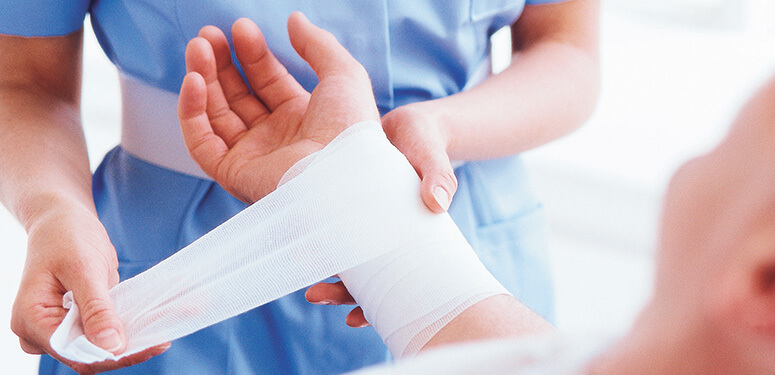No matter how careful we try to be with our own personal safety, at some time in our lives we will all have to deal with a serious personal injury. These injuries can happen in a car accident or slipping on an icy sidewalk, or even in the ostensible safety of our own homes. As a matter of fact, according to statistics from the National Safety Council, a majority of accidents resulting in serious personal injuries actually do occur to persons at home.
The confounding thing about many personal injuries is that the symptoms often do not present themselves at the time of the accident that causes them. For example, if you’re in an automobile accident, especially where a serious deceleration has occurred, you will often not feel the effects of the internal injuries that you suffered until the next day, or even several days later.
Brain Injury
One of the most difficult types of personal injuries to accurately define and detect right after an accident is a brain injury. Steven Schwartzapfel, one of the top New York personal injury lawyers, explains why, “Traumatic brain injury is typically caused by physical trauma to the head, which can lead to severe brain damage. However, traumatic brain injury (TBI) can also occur without physical evidence. This type of TBI can occur in cases of whiplash and shaken babies.”
There is an old saying in the basketball: “No blood; no foul.” But there most certainly does not have to be blood, or even bruising, with many serious brain injuries. Often times there is no outward manifestation of the injury at all until several days, or even weeks later. That’s why it’s important that you visit a neurologist for a full check up and a brain scan after a car, or any other type of serious accident.
Back Injury
Another personal injury for which it is hard to pin down exact causes and remedies is the back injury. An overwhelming cause of back pain is car and work accidents. It is the most common cause of job-related disability and a leading contributor to missed workdays. In survey after survey, more than one-fourth of the adults in this country reported experiencing some kind of low back pain.
The first step in the treatment for back injury is to determine whether the pain is acute or chronic. Back surgery is a radical step and only recommended if there is evidence of worsening nerve damage and diagnostic tests indicate structural changes that could be addressed through surgical means.
Conventional treatments include hot or cold packs. These remedies have never been proven effective, but they may help alleviate pain and inflammation while promoting greater mobility for some patients.
Stretching exercises are an important part of therapy for back rehabilitation. Resumption of normal daily activities as soon as possible, while avoiding movements that aggravate pain, is very important. There is strong evidence to suggest that persons who continue their activities without bed rest following onset of low back pain appeared to have better back flexibility than those who rested in bed for a week.
Further studies suggest that bed rest alone may make back pain worse and can lead to secondary complications such as depression, decreased muscle tone, and blood clots.
So the best way to deal with persistent personal injuries in your back is to instigate an aggressive rehabilitation regimen that includes lots of stretching and exercise. If you want to mitigate back pain; you’re going to have to work at it.
Joint Injuries
Another of the most common types of personal injuries is damage to your joints, such as knees, hips, shoulder, wrists and elbows. And these injuries can also be inexplicable as to an exact cause. They usually result from sprains, which occur when the muscle-tendon units that hold our bones together are either overstretched or torn. This tendon damage results in swelling and a great deal of pain – often to the extent that the accident victim is unable to even move the joint.
Surgery is usually required to repair joint injuries. Usually, the damaged tendon is replaced with a similar tendon from another part of the body. This is a complicated and expensive surgical procedure that is only performed by highly trained specialists by means of arthroscopic surgical methods.
After the surgery, there is a prolonged rehabilitation period because the body has to ‘learn’ to accept this new tissue that has been moved to a different internal location. There is much scarring that needs to be very slowly mitigated through specific stretching regimens after arthroscopic surgery.
It is, at the least, a 6-month process that needs to be administered by rehabilitation experts. One mistake and the whole surgical process might have to be repeated over again, so patients have to be sure to follow therapy procedures exactly.

